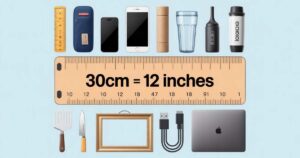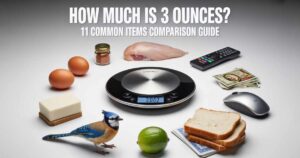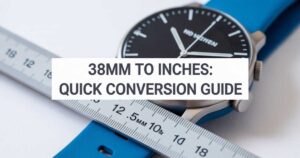Ever found yourself staring at a kitchen scale wondering what 100 grams actually feels like? You’re not alone. Whether you’re following a recipe, shipping a package, or helping kids with science projects, understanding weight measurements makes life easier.
Most Americans think in pounds and ounces. But here’s the thing – 100 grams pops up everywhere. From postal regulations to dietary tracking, this specific weight matters more than you’d expect.
This guide reveals 14 everyday items that weigh exactly 100 grams. No more guesswork. No more conversion confusion. Just practical, hands-on knowledge you can use immediately.
How Heavy is 100 Grams?
Picture holding 3.5 ounces in your hand. That’s your 100-gram reference point right there.
To put this in perspective, 100 grams weighs less than most smartphones. An iPhone 14, for example, tips the scales at 172 grams. Your morning coffee mug? Usually around 300-400 grams when empty.
Here’s what makes 100 grams special:
- Light enough to hold comfortably in one hand
- Heavy enough to feel substantial
- Perfect reference point for kitchen measurements
- Common postal weight for small packages
Think of it as the sweet spot between “barely noticeable” and “definitely there.” It’s roughly equivalent to:
| US Measurement | Metric Equivalent | Common Comparison |
| 3.5 ounces | 100 grams | Less than 1/4 pound |
| 0.22 pounds | 100 grams | About 1/5 of a pound |
Most kitchen scales easily measure this weight. Digital models show precise readings, making 100-gram measurements surprisingly accurate for home use.
Household Items That Weigh 100 Grams
Your home contains dozens of 100-gram household items. The trick lies in knowing where to look.
We’ve selected these daily items based on three criteria:
- Availability – Found in most American homes
- Consistency – Weight rarely varies significantly
- Practicality – Useful for real-world measurements
Some items hit exactly 100 grams. Others fall within the 95-105 gram range, which works perfectly for practical purposes. Regional brands might vary slightly, but these home objects provide reliable reference points.
Ready to discover what’s hiding in plain sight? These household essentials will change how you think about weight measurement forever.
1. Two Tennis Balls

Tennis equipment offers one of the most reliable 100-gram references available.
Official tennis balls weigh between 56-59.4 grams each. Two regulation balls land you right at 112-119 grams – close enough for practical measurement purposes. But here’s the insider knowledge: used tennis balls often weigh slightly less due to felt wear and internal pressure loss.
Brand-new Wilson or Penn tennis balls from sporting goods stores typically weigh:
- Single ball: 57-58 grams
- Two balls combined: 114-116 grams
Why tennis balls work brilliantly:
- Consistent manufacturing standards across brands
- Readily available in most American households
- Familiar texture makes weight estimation easier
- Durable enough for repeated measurement use
Pro tip: Keep two used tennis balls specifically for kitchen measurements. They’ll gradually approach that perfect 100-gram mark as they age and lose internal pressure.
Tennis ball ball weight stays remarkably consistent within batches. Manufacturing regulations ensure minimal variation, making them more reliable than many kitchen items for measurement purposes.
2. 20 US Nickels
US currency provides the most precise 100-gram measurement available.
Each nickel weighs exactly 5.000 grams according to US Mint specifications. Twenty nickels deliver exactly 100 grams – no approximation needed. This precision stems from strict federal minting standards that haven’t changed in decades.
Here’s the coin weight breakdown:
| Coin Type | Individual Weight | Quantity for 100g | Total Value |
| Nickel | 5.000 grams | 20 coins | $1.00 |
| Penny | 2.500 grams | 40 coins | $0.40 |
| Dime | 2.268 grams | 44 coins | $4.40 |
| Quarter | 5.670 grams | 18 coins | $4.50 |
Nickels win for several reasons:
- Mathematical perfection – No rounding required
- Widespread availability – Most Americans have nickels handy
- Durability – Copper-nickel alloy resists wear
- Consistent composition – Same materials since 1866
Keep a small container with exactly 20 nickels near your kitchen scale. You’ll have an instant, accurate 100-gram reference whenever needed. This change adds up to exactly one dollar, making it economical and practical.
Historical note: Nickel composition has remained remarkably stable compared to other US coins. While pennies changed composition in 1982 and quarters vary by mint year, nickels maintain consistent weight across decades.
3. 20 Pence Coins
UK currency offers another precise measurement option for international households.
British 20 pence coins weigh exactly 5.00 grams each – identical to US nickels in mass. Twenty coins deliver that perfect 100-gram measurement. This coin measurement proves invaluable for Americans with British connections or international coin collections.
Key specifications:
- Material: Copper-nickel alloy (84% copper, 16% nickel)
- Diameter: 21.4mm
- Individual weight: 5.00 grams exactly
- Edge design: Smooth with seven indentations
Why 20p coins work excellently:
- Same precision as US nickels
- Distinctive heptagonal shape prevents confusion
- Consistent weight across production years
- Readily available through currency exchanges
For American households, these coins might come from:
- International travel souvenirs
- Foreign exchange collections
- British expatriate family members
- Numismatic hobbyist collections
Practical application: If you’re frequently working with international money or teaching children about global currencies, 20 pence coins provide an educational 100-gram reference point that doubles as a geography lesson.
The Royal Mint maintains the same exacting standards as the US Mint, ensuring these UK currency coins deliver consistent weight measurements year after year.
A Kiwifruit/Avocado
Fresh produce brings natural variation to 100-gram measurements, but these fruits consistently hit the target range.
A medium kiwifruit typically weighs 90-110 grams, making it an excellent organic reference point. Small avocados fall into similar ranges, though size variation runs wider than kiwis.
Kiwifruit specifications:
- Small: 70-85 grams
- Medium: 90-110 grams
- Large: 115-130 grams
Avocado weight ranges:
- Small: 150-200 grams
- Medium: 200-250 grams
- Very small: 80-120 grams (perfect for our purposes)
What affects fruit weight:
| Factor | Impact on Weight | Typical Variation |
| Ripeness | Minimal change | ±2-3 grams |
| Variety | Significant | ±20-30 grams |
| Growing conditions | Moderate | ±5-10 grams |
| Water content | Minimal | ±1-2 grams |
Pro shopping tip: When selecting kiwis for 100-gram references, choose fruits that feel substantial but aren’t oversized. The fuzzy skin adds minimal weight – most mass comes from the dense, juicy interior.
Seasonal considerations: Kiwifruit maintains consistent size year-round due to global growing seasons. California and New Zealand harvests alternate, ensuring steady supplies of uniform small fruit in American markets.
These produce options work best when you need an edible measurement tool that won’t go to waste after use!
5. All-Purpose Glue

Craft supplies offer surprisingly consistent weight measurements, and glue sticks top the list.
Standard all-purpose glue sticks weigh remarkably close to 100 grams across major brands. Elmer’s, Scotch, and generic store brands typically range from 95-105 grams when new.
Why glue sticks work well:
- Consistent manufacturing across brands
- Dense composition – little air, mostly adhesive material
- Standardized sizing for office and school use
- Readily available in most households with children
Weight breakdown by type:
| Glue Type | Typical Weight | Accuracy for 100g | Availability |
| Large glue stick | 95-105g | Excellent | Very high |
| Craft glue bottle | 85-95g | Good | High |
| School glue stick | 40-50g | Poor (need 2) | Very high |
Storage considerations: Adhesive products maintain weight consistency until they begin drying out. Cap tightly after use to preserve both functionality and weight accuracy.
Brand comparisons: Elmer’s purple glue sticks consistently weigh 105-108 grams new. Scotch brand runs slightly lighter at 98-102 grams. Store brands typically fall right in the middle.
Practical advantage: Unlike food items, glue weight doesn’t change with temperature or humidity. Your measurement reference stays constant regardless of kitchen conditions.
Educational bonus: These craft supply measurements help children understand weight concepts while working on school projects. Learning measurement through familiar materials builds practical math skills.
6. Stick of Butter
Kitchen staples don’t get more reliable than butter for weight measurements.
A standard US stick of butter weighs exactly 113 grams (4 ounces). While slightly heavier than our 100-gram target, it’s close enough for most practical purposes. Plus, every American kitchen contains this dairy product.
US butter stick specifications:
- Weight: 113 grams (1/4 pound)
- Length: 4.75 inches
- Width: 1.25 inches
- Wrapper markings: Tablespoon measurements
Why butter works excellently:
- Standardized sizing across all major brands
- Federal regulations ensure consistent weight
- Temperature stable – weight doesn’t fluctuate significantly
- Universal availability in American households
Brand consistency comparison:
| Brand | Stick Weight | Variation Range | Packaging |
| Land O’Lakes | 113g | ±1g | Foil wrapper |
| Challenge | 113g | ±1g | Parchment paper |
| Kerrygold | 113g | ±1g | Foil wrapper |
| Store brands | 113g | ±2g | Various |
Temperature effects: Refrigerated butter maintains consistent weight. Room temperature butter might lose minimal moisture but stays within measurement range.
Regional note: European butter often comes in 250-gram blocks (about 8.8 ounces), making it less useful for 100-gram references. Stick with American-style butter blocks for measurement consistency.
Cooking crossover: This measurement knowledge transfers directly to baking. Understanding butter weight helps with recipe modifications and ingredient substitutions.
7. Two Golf Balls
Golf equipment provides another sports-based measurement reference that’s remarkably accurate.
Official golf balls weigh exactly 45.93 grams each according to USGA regulations. Two balls total 91.86 grams – very close to our 100-gram target. For practical purposes, this 8% difference rarely matters.
Regulation specifications:
- Maximum weight: 45.93 grams (1.620 ounces)
- Minimum diameter: 1.68 inches
- Maximum diameter: No limit (but standardized around 1.68″)
Why golf balls excel for measurements:
- Strict manufacturing standards ensure consistency
- Readily available – 66 million Americans play golf annually
- Durable construction maintains weight over time
- Compact size makes storage convenient
Brand weight consistency:
| Brand | Individual Weight | Two Ball Total | Quality Grade |
| Titleist Pro V1 | 45.8g | 91.6g | Tournament |
| Callaway Chrome | 45.7g | 91.4g | Premium |
| TaylorMade TP5 | 45.9g | 91.8g | Tour level |
| Generic/Range | 45.5-46.0g | 91-92g | Standard |
Practical advantages: Unlike tennis balls, golf balls don’t lose internal pressure. Their solid construction maintains consistent weight indefinitely. Used balls from driving ranges work just as well as expensive tour-level equipment for measurement purposes.
Storage tip: Keep two golf balls in your kitchen junk drawer. They’re small, won’t spoil, and provide instant weight references whenever needed.
Educational bonus: Golf ball measurements introduce children to precision manufacturing and regulatory standards in sports equipment.
8. 100 Paper Clips

Office supplies offer perhaps the most mathematically perfect 100-gram measurement available.
Standard paper clips weigh exactly 1 gram each. Count out 100 clips, and you’ve got precisely 100 grams. This metal fastener approach works brilliantly for educational demonstrations and precise measurements.
Paper clip specifications:
- Standard size: #1 (1 inch length)
- Individual weight: 0.9-1.1 grams
- Material: Steel wire with protective coating
- Manufacturing tolerance: ±0.1 grams
Why 100 paper clips work perfectly:
- Mathematical precision – 100 clips = 100 grams
- Easy verification – count and weigh simultaneously
- Widespread availability in offices and homes
- Consistent manufacturing across brands
Counting strategies for accuracy:
| Method | Accuracy | Time Required | Best For |
| Individual counting | Highest | 2-3 minutes | Education |
| Groups of 10 | High | 1 minute | Quick reference |
| Pre-counted containers | Variable | Instant | Convenience |
Brand variations: Staples, Office Depot, and generic brands all produce clips within the 0.9-1.1 gram range. Premium brands like Acco tend toward the higher end (1.0-1.1g), while budget options lean lighter (0.9-1.0g).
Educational applications: This measurement method teaches counting, multiplication, and weight concepts simultaneously. Children love the hands-on approach of building their own 100-gram reference.
Storage solution: Pre-count 100 clips into a small container. Label it “100 grams exactly” for instant measurement verification whenever needed.
Quality considerations: Avoid colored or plastic-coated specialty clips, as coating adds variable weight that affects accuracy.
9. Sugar or Salt
Pantry staples like sugar and salt provide convenient 100-gram measurements, though volume-to-weight conversion requires attention to detail.
Granulated sugar weighs approximately 0.85 grams per milliliter, while table salt weighs about 1.2 grams per milliliter. These seasoning densities mean different volumes achieve 100-gram measurements.
Volume conversions for 100 grams:
| Ingredient | Grams per mL | Volume for 100g | US Measurement |
| Granulated sugar | 0.85 | 118 mL | 1/2 cup |
| Table salt | 1.20 | 83 mL | 1/3 cup + 1 tbsp |
| Brown sugar (packed) | 0.90 | 111 mL | 1/2 cup – 1 tbsp |
| Kosher salt | 0.75 | 133 mL | 1/2 cup + 2 tbsp |
Why these pantry items work well:
- Universal availability in American kitchens
- Consistent density within brands
- Easy measurement with standard measuring cups
- Multiple cooking applications beyond measurement
Accuracy considerations:
- Humidity affects sugar clumping and weight
- Crystal size varies between brands
- Packing method influences volume measurements
- Temperature has minimal impact on weight
Brand consistency examples:
- Domino sugar: 0.84-0.86 g/mL consistently
- C&H sugar: 0.85-0.87 g/mL range
- Morton salt: 1.18-1.22 g/mL depending on crystal size
Pro measuring tip: Level measurements with a straight edge for consistency. Scooped measurements can vary by 10-15% depending on technique.
Storage wisdom: Keep these cooking staples in airtight containers to prevent humidity from affecting weight measurements. Moisture absorption changes both weight and volume unpredictably.
10. A Banana
Medium bananas consistently weigh close to 100 grams, making them excellent natural measurement tools.
A typical medium banana (about 7-8 inches long) weighs 90-120 grams including the peel. Remove the peel, and you’re looking at 65-85 grams of actual fruit. For measurement purposes, whole bananas work better than peeled ones.
Banana weight by size:
| Size Category | Length | Weight with Peel | Weight without Peel |
| Small | 6-7 inches | 80-100g | 55-70g |
| Medium | 7-8 inches | 100-130g | 70-90g |
| Large | 8-9 inches | 130-160g | 90-115g |
What affects banana weight:
- Ripeness level – Minimal impact (±3-5 grams)
- Variety – Cavendish standard, others vary significantly
- Growing conditions – Climate affects size consistency
- Storage time – Moisture loss over days
Ripeness guide for weight accuracy:
- Green (unripe): Heaviest, most water content
- Yellow (perfect): Standard weight reference
- Spotted (very ripe): Slight weight loss from moisture
- Brown (overripe): Noticeable weight reduction
Practical advantages: Bananas offer a portable measurement tool that doubles as a healthy snack. Perfect for teaching children about weight while providing nutrition.
Seasonal consistency: Unlike many fruits, bananas maintain relatively consistent sizing year-round due to controlled growing environments and global supply chains.
Educational value: Banana measurements introduce concepts of natural variation, ripeness effects, and biological growth patterns while teaching weight estimation skills.
11. A Newborn Kitten
Young kittens represent the living end of our 100-gram spectrum, though this measurement comes with important caveats.
Newborn kittens typically weigh 85-115 grams at birth, with most falling right around 100 grams. However, kitten size varies significantly by breed, litter size, and individual genetics.
Kitten weight by age:
| Age | Weight Range | Average Weight | Growth Rate |
| Birth | 85-115g | 100g | Baseline |
| 1 week | 120-170g | 140g | +40g |
| 2 weeks | 170-230g | 200g | +60g |
| 3 weeks | 220-300g | 260g | +60g |
Breed variations affect newborn weights:
- Maine Coon: 110-130g (larger breed)
- Persian: 90-110g (medium breed)
- Siamese: 85-105g (slender breed)
- Domestic Shorthair: 95-115g (most common)
Important considerations for pet owners:
⚠️ Never use kittens as measurement tools. This reference exists purely for educational comparison. Young cats require gentle handling and professional veterinary care.
Why this comparison matters:
- Helps pet weight understanding for new owners
- Provides context for veterinary discussions
- Teaches children about animal development
- Demonstrates living vs. inanimate weight concepts
Veterinary insights: Professional breeders and veterinarians use precise scales for newborn kitten monitoring. Weight tracking in the first weeks indicates health and development progress.
Educational application: This comparison helps children understand that 100 grams represents a tiny, delicate living creature – fostering respect for both measurement precision and animal welfare.
12. A Pocket Knife

Everyday tools like pocket knives provide durable, consistent weight references for outdoor enthusiasts and practical households.
A standard pocket knife typically weighs 80-120 grams depending on size, blade count, and construction materials. Single-blade folders tend toward the lighter end, while multi-tool versions approach the heavier range.
Pocket knife weight factors:
| Feature | Weight Impact | Typical Addition |
| Handle material | Significant | ±20-30g |
| Blade count | High | +15g per blade |
| Locking mechanism | Moderate | +5-10g |
| Overall length | High | +10g per inch |
Common pocket knife weights:
- Swiss Army Classic: 21g (too light)
- Victorinox Huntsman: 97g (perfect!)
- Buck 110 Folding Hunter: 200g (too heavy)
- Kershaw Leek: 74g (close enough)
Material impact on weight:
- Aluminum handles: Lightest option
- Steel construction: Medium weight
- Titanium: Light but expensive
- Wood or bone: Variable, often heavier
Why pocket knives work for measurement:
- Consistent manufacturing within models
- Durable construction maintains weight over time
- Compact size for easy storage and handling
- Multi-functional – tool and measurement reference
Safety considerations: Always handle knives responsibly. Closed knives work perfectly for weight measurement without safety risks. Keep blades folded and secured during measurement activities.
Brand consistency: Established manufacturers like Victorinox, Buck, and Kershaw maintain tight weight tolerances within specific models, making them reliable measurement references.
13. Two Medium Size Eggs
Chicken eggs provide an excellent kitchen-based measurement that most American households can easily verify.
Two medium-sized eggs weigh approximately 100-110 grams total, making them nearly perfect for our reference needs. The USDA standardizes egg weight classifications, ensuring consistent measurements across brands and regions.
USDA egg size classifications:
| Size Grade | Individual Weight | Two Eggs Total | Common Use |
| Small | 43g (1.5 oz) | 86g | Specialty recipes |
| Medium | 50g (1.75 oz) | 100g | Perfect match! |
| Large | 57g (2.0 oz) | 114g | Most common |
| Extra Large | 64g (2.25 oz) | 128g | Baking applications |
Why medium eggs work excellently:
- Precise USDA standards ensure consistency
- Widely available in most grocery stores
- Natural packaging protects during measurement
- Multiple uses after weighing
Shell vs. content weight breakdown:
- Shell weight: 8-10% of total (4-5g per egg)
- Egg white: 60% of contents
- Egg yolk: 40% of contents
- Total edible portion: 90-92% of weight
Freshness impact on weight: Fresh eggs maintain consistent weight for weeks when properly refrigerated. Older eggs lose minimal moisture through the shell, but the difference rarely exceeds 1-2 grams.
Grade variations: Grade AA, A, and B eggs can vary slightly in weight even within the same size category. Grade AA (highest quality) tends toward the upper weight ranges.
Practical kitchen advantage: Since most recipes call for large eggs, knowing that two medium chicken eggs equal 100 grams helps with recipe scaling and ingredient substitutions.
Seasonal considerations: Egg weight remains remarkably consistent year-round due to controlled feeding and housing conditions in commercial production.
14. Apple Magic Mouse

Modern technology provides a contemporary 100-gram reference that resonates with digital-native generations.
The Apple Magic Mouse (2nd generation) weighs exactly 99 grams according to Apple’s technical specifications. This computer accessory represents one of the most precisely manufactured items on our list.
Technical specifications:
- Official weight: 99 grams
- Dimensions: 2.16″ × 4.47″ × 0.85-1.35″
- Battery: Built-in lithium-ion (included in weight)
- Materials: Aluminum and glass construction
Why the Magic Mouse works perfectly:
- Precise manufacturing – Apple maintains tight tolerances
- Consistent across units – Mass production ensures uniformity
- Contemporary relevance – Familiar to younger generations
- Premium construction – Weight stays constant over time
Comparison with other Apple devices:
| Device | Weight | Suitability | Availability |
| Magic Mouse | 99g | Excellent | Mac households |
| AirPods Pro (case) | 45g | Poor | Very common |
| iPhone SE | 144g | Too heavy | Very common |
| Apple Watch | 32-45g | Too light | Common |
Manufacturing consistency: Apple’s quality control ensures that Magic Mouse units vary by less than 1-2 grams from the specified 99g weight. This precision makes it more reliable than many household items.
Battery considerations: The built-in battery is permanently installed and included in the official weight specification. Unlike devices with removable batteries, weight remains constant throughout the mouse weight lifespan.
Cultural relevance: For households with Apple computers, the Magic Mouse provides an instantly recognizable measurement reference that bridges traditional weight concepts with modern technology.
Educational value: This reference helps children understand precision manufacturing and quality control in technology products while learning measurement concepts.
Conclusion
Understanding what weighs 100 grams transforms abstract measurements into practical, everyday knowledge you can actually use.
From the mathematical precision of 20 US nickels to the natural variation of medium bananas, these household items prove that accurate measurement tools surround us constantly. Whether you’re following recipes, shipping packages, or teaching children about weight, these references eliminate guesswork.
The most reliable options for consistent 100-gram measurements:
- 20 nickels (exactly 100g)
- Two tennis balls (110-115g)
- Medium kiwifruit (90-110g)
- Apple Magic Mouse (99g)
- 100 paper clips (exactly 100g)
Quick accessibility winners:
- Stick of butter (found in every kitchen)
- Two medium eggs (readily available)
- Sugar or salt (with proper measuring)
Keep measurement tools handy by storing a few of these items together. Twenty nickels in a small container, two used tennis balls in a kitchen drawer, or a pre-counted bag of 100 paper clips create instant reference points whenever you need them.
Practice makes perfect. Handle these items regularly to develop your weight estimation skills. Soon you’ll instinctively know what 100 grams feels like without needing a scale.
Remember: these measurements aren’t just academic curiosities. They’re practical life skills that make cooking more precise, shipping more economical, and science projects more educational. Start exploring your own household – you’ll be amazed what other 100-gram items you discover hiding in plain sight!
Frequently Asked Questions
14 common things that weigh 100 grams in kg?
These fourteen items weigh 0.1 kilograms or one-tenth kilogram.
How many AAA batteries weigh 100 grams?
Approximately eight AAA batteries equal 100 grams total weight.
What weighs 100g to calibrate scales?
Twenty nickels, two tennis balls, or paper clips work.
What weighs 100 grams in coins?
Twenty US nickels or twenty British pence coins exactly.
What common household item weighs 100 grams?
Medium banana, stick butter, or all-purpose glue stick.
Things that weigh 100 pounds?
Large dog, small person, or heavy furniture piece typically.
How many quarters weigh 100 grams?
Approximately eighteen US quarters equal 100 grams total weight.
Weight of common household items in grams?
Banana 100g, smartphone 150g, coffee mug 300g approximately.









